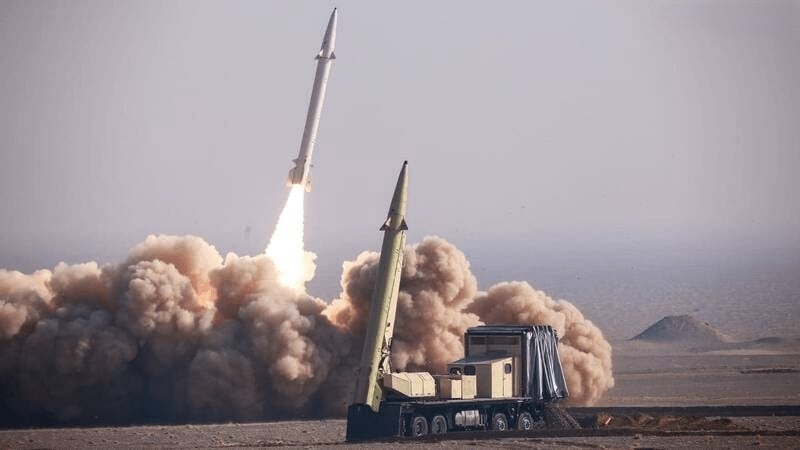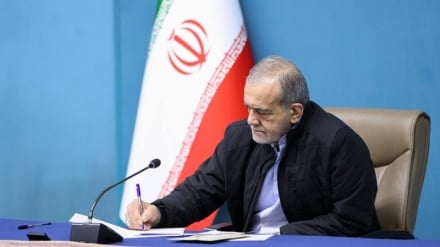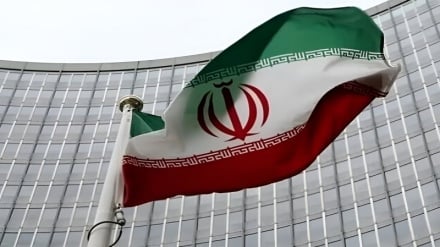How Israel's blitzkrieg attack on Iran fails?
-

Iran response to Zionist regime attacks
Pars Today -In the early hours of June 13, 2025, the Israeli regime attempted to shatter the defensive structure of the Islamic Republic by launching a coordinated and surprise attack on Iranian command centers and military infrastructure, modeling its approach on the "Blitzkrieg" tactic of Nazi Germany. However, in less than 48 hours, developments on the ground revealed a different reality to the aggressor.
The Blitzkrieg tactic, executed by Nazi Germany in Poland and later France in the early years of World War II, rested on three key elements: precise intelligence on the location of headquarters and bases; concentrated bombing and attacks on communication lines and decision-making centers; and the rapid penetration of armored units to exploit the created shock. According to Pars Today, citing Fars news agency, military theorists like B.H. Liddell Hart and John Keegan have described this method as being based on speed, coordination between branches, and paralyzing the enemy's decision-making system. This was the very model insisted upon by the planners of the attack on Iran.
What was supposed to be a successful repeat of Hitler's famous "Blitzkrieg" tactic—a swift, concentrated, and paralyzing strike against the enemy's leadership and communication networks—was initiated in the early hours of June 12 against Iran. However, the conclusion of this scenario unfolded precisely contrary to its planners' expectations: not an immediate surrender, but a strategic defeat for the attacker and a strategic victory for Iran.
By targeting the leadership, bombing communication stations, and carrying out terrorist operations against senior commanders, Israel aimed to disable Iran's chain of command and create a strategic shock.
In the initial hours, Iran's air defense faced a massive onslaught of electronic warfare and a wave of coordinated attacks. The attacks by fifth columns, the widespread wave of micro-drones, and internal sabotage complicated the calculations for defense. It seemed the equation matched the historical scenario: with communications severed and leaders eliminated, the possibility of centralized defense would be nullified.
The turning point: Structural flexibility and immediate replacement of commanders
Striking at the leadership fails if the other side has the capability for rapid replacement and maintaining decision-making mechanisms. Iran immediately neutralized the initial shock by implementing pre-designed plans, installing new commanders, and activating pre-designated, segregated channels for command exchange and control.
The action of His Eminence Ayatollah Khamenei, the Supreme Commander of the Iranian Armed Forces, in swiftly appointing new commanders demonstrated that the country's military structure possesses a strategic depth and flexibility that protects it from rapid collapse.
From tactic to asymmetric tactic: Turning the battle into a costly war of attrition for the aggressor
Iran abandoned the battlefield based on direct confrontation and adopted an asymmetric strategy using low-cost drones, dispersed attacks, and targeted missile launches. This shifted the battle towards a war of attrition, imposing massive defensive and logistical costs on the aggressor's supporters. Each interception cost the aggressor's support network millions of dollars, and this economic-military pressure quickly weakened the capacity for external support. Consequently, what was supposed to be decided in a matter of days turned into a protracted battle profitable for the defender.
The decline of the Iron Dome "myth" and regaining the initiative
Reports indicate that Iranian missiles and drones were able to penetrate key targets and reduce the effectiveness of the multi-layered defense of the aggressor and its supporters—an event that showed analysts that absolute claims about the efficacy of the aggressor's defense systems need re-evaluation. On the ground, Iran regained the initiative, and its retaliatory attacks demonstrated that its operational capability was preserved under complex conditions.
The National unity of the Iranian people: The secret to defeating the enemy on the battlefield
The national unity of Iranians, the neutralization of efforts to incite internal crisis, and popular resistance meant that fifth columns and internal sabotage operations could not realize the aggressor's grand plan. Simultaneously, the heavy costs of external support and logistical-financial pressures led the aggressor's foreign partners to reconsider, preventing the effective continuation of comprehensive support for Israel. Thus, not only were the initial military objectives not achieved, but the political and operational position of the aggressor was weakened.
What was supposed to be concluded quickly and decisively by modeling the historical experience of Nazi Germany failed due to two fundamental factors: First, the structural depth and defensive military flexibility which allowed for the replacement and preservation of command. Second, the defender's choice to shift the battle to an asymmetric and attritional arena, which rapidly increased the support costs for the attackers and their foreign backers.
In the end, neither was Iran defeated, nor did the "lightning attack" plan succeed; rather, this tactic, at least in this battle, resulted in strategic defeat, and the Islamic Republic emerged victorious.
This political-military confrontation carries a clear message for regional and extra-regional actors: the replication of historical tactics without regard for the structural depth, resilience, and asymmetric capabilities of the defender can not only lead to military failure but also expose the aggressor and its supporters to strategic costs and losses.


